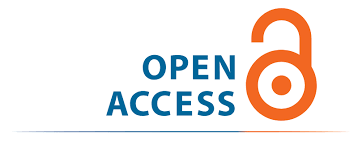Nekoliko primjena matematike u forenzici
Abstract
Inspiracija za rad i problem(i) koji se radom oslovljava(ju): Kriminalistika i kriminologija nisu samo kvalitativne, već i kvantitativne discipline. Veliki broj današnjih saznanja iz statistike i matematike općenito nalaze svoju primjenu u forenzici. Stoga je problem ovog rada podsjećanje ili informiranje ovog profila stručnjaka vezano za nekoliko matematičkih i logičkih procedura korisnih za forenzičke svrhe.
Ciljevi rada (naučni i/ili društveni): Cilj ovog rada jeste prikaz četiri primjene matematike u forenzičnim znanostima, odnosno u kriminalističke svrhe. Prva primjena odnosi se na procjenu visine na osnovi dužine traga stopala. Druga se tiče procjene vremena koje je prošlo od trenutka smrti, na osnovi tjelesne temperature. Sljedeća primjena ogleda se u pravilnom korištenju teorije vjerojatnosti prilikom izvođenja zaključaka u forenzici. Posljednja primjena matematike koja je prikazana tiče se geografskog profiliranja, te se odnosi naodređivanje zone (područja) u kojoj počinitelj najvjerojatnije boravi ili živi.
Metodologija/Dizajn: Kako je članak preglednog tipa, provedena je analiza sadržaja radova drugih autora i relevantnih rezultata do kojih su oni došli.
Ograničenja istraživanja/rada: Radom nisu zahvaćene sve primjene matematike u forenzičkoj znanosti, već primjeri za nekoliko odabranih primjena.
Rezultati/Nalazi: Imajući u vidu nabrojane koristi od primijenjene matematike, potrebno je naglasiti da forenzičar, za njihovo uspješno korištenje u praksi, treba znati ispravno interpretirati koeficijent korelacije, te pravilno koristiti koeficijente u regresijskoj jednadžbi (što je potrebno u domeni antropometrijskih podataka). Nadalje, nužno je razumjeti osnove logaritamskog, te diferencijalnog i integralnog računa, koji se nalaze u osnovi određivanja vremena smrti na osnovu tjelesne temperature. Prilikom geografskog profiliranja uz Rossmovu formulu, važno je poznavati osnovne principe teorije vjerojatnosti, induktivnog zaključivanja i interpretacije statističkih testova, te koristiti odgovarajuća informatička pomagala, uz ispravno očitavanje odgovarajućih vrijednosti.
Generalni zaključak: Uloga matematičara/statističara u timu forenzičara je od velikog praktičnog značaja.
Opravdanost istraživanja/rada: Radom se skreće pažnja na često zapostavljeno područje primijenjene matematike u okviru forenzičke znanosti.
Some Applications of Mathematics to Forensic Science
Reason(s) for writing and research problem(s): Forensics and criminology are not only qualitative but also quantitative disciplines. A large number of today's statistical and mathematical findings generally find their application in forensics. Therefore, the problem of this article is to remind or inform this expert profile of several mathematical and logical procedures useful for forensic purposes.
Aims of the paper (scientific and/or social): The aim of this paper is to illustrate four applications of mathematics to forensic science, i.e. for criminology purposes. The first one takes into account height assessment with regard to the length of a footprint. The second one considers time-after-death assessment, based on body temperature. The next application considers the proper usage of the probability theory while making conclusions in forensic science. The last application of mathematics that is shown here includes geografic profiling. It is about determining the zone where an offender stays or resides.
Methodology/Design: As a review article, an analysis of the content of other author's works and the relevant results they came up is conducted.
Research/paper limitations: Not all applications of mathematics in forensic science are included in the article, but examples of several selected applications.
Results/Findings: Taking into account the aforementioned utility of the applied mathematics, it should be highlighted that forensic expert, in order to use them correctly, should know the following things: how to interpret correlation coefficient properly, how to use regression coefficients adequately (it is needed in the field of anthropometric data); how to apply the fundamentals of logarithms, differentials (derivatives), and integrals (all of this is the background of determining time of death on the basis of body temperature); basic principles of the probability theory, inductive reasoning, and interpreting the results of statistical tests, as well as how to use appropriate IT devices, by reading various values and figures correctly concerning the geographic profiling with Rossmo's formula.
General conclusion: The role of mathematician/statistician in the forensic team is of great practical significance.
Research/paper validity: The paper draws attention to the usually neglected field of applied mathematics within forensic science.
Downloads
Downloads
Published
Issue
Section
Categories
License
Copyright (c) 2020 Kriminalističke teme

This work is licensed under a Creative Commons Attribution-NonCommercial 4.0 International License.










